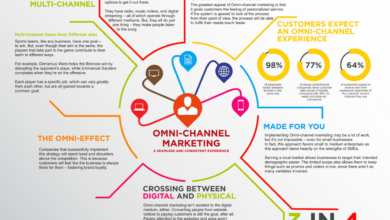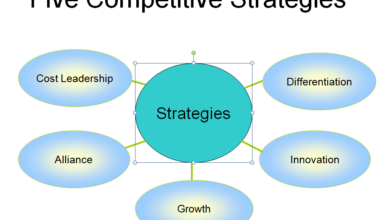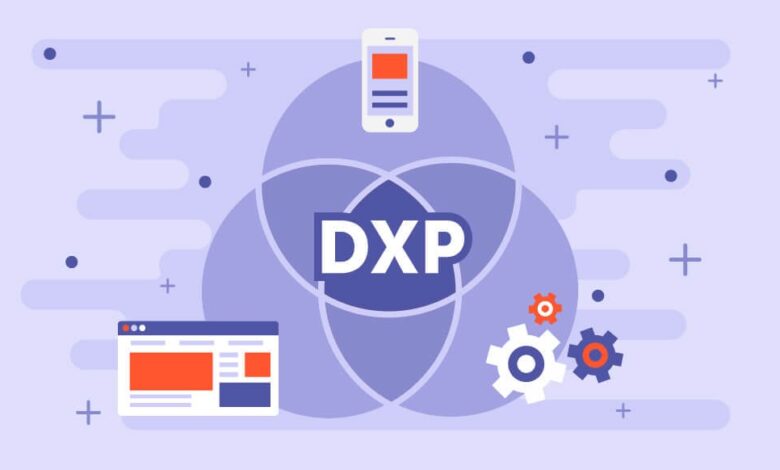
The Path to a Successful Customer Experience Making DXP Integration Easier
The path to a successful customer experience making DXP integration easier isn’t always a smooth one. It’s a journey filled with potential pitfalls and triumphs, demanding careful planning and execution. This post dives into the key elements of creating a truly exceptional customer experience and how integrating a Digital Experience Platform (DXP) can streamline the process, unlocking powerful personalization and enhancing customer loyalty.
We’ll explore the challenges, share practical solutions, and examine real-world examples of companies who have successfully navigated this path.
From defining what constitutes a truly successful customer experience (CX) – measuring metrics like CSAT and NPS – to understanding the intricacies of DXP integration, we’ll cover it all. We’ll look at the critical role a DXP plays in crafting a seamless customer journey, addressing common integration hurdles like data silos and security risks. Finally, we’ll explore future trends in DXP and CX, including the exciting potential of AI and machine learning.
Defining Successful Customer Experience (CX)
A truly successful customer experience goes beyond simply meeting customer expectations; it actively delights and fosters loyalty. It’s about creating a seamless and positive journey that leaves customers feeling valued and understood at every touchpoint. This involves anticipating needs, exceeding expectations, and consistently delivering on promises. Ultimately, a successful CX translates into increased customer lifetime value, positive word-of-mouth referrals, and a strong brand reputation.
Key Characteristics of Successful Customer Experience
Several key characteristics define a truly successful customer experience. These include personalization, ease of use, responsiveness, empathy, and proactive problem-solving. Personalization tailors interactions to individual customer preferences. Ease of use ensures simple and intuitive navigation across all channels. Responsiveness means promptly addressing customer inquiries and concerns.
Empathy demonstrates understanding and care for the customer’s situation. Proactive problem-solving anticipates potential issues and addresses them before they impact the customer. A successful CX integrates all these elements seamlessly.
Examples of Companies with Exceptional CX
Companies like Apple and Zappos are often cited for their exceptional customer experiences. Apple cultivates a loyal following through its sleek product design, intuitive user interfaces, and highly trained retail staff who provide personalized assistance. Zappos, on the other hand, is renowned for its outstanding customer service, offering exceptional returns policies, 24/7 support, and a culture that empowers employees to go above and beyond to resolve customer issues.
These companies invest heavily in training, technology, and a customer-centric culture to achieve their high standards.
Measurable Metrics for Assessing CX Success
Measuring CX success relies on several key metrics. Customer Satisfaction (CSAT) scores, obtained through surveys, directly measure customer happiness with specific interactions. Net Promoter Score (NPS) gauges customer loyalty by asking how likely they are to recommend the company to others. Customer Effort Score (CES) assesses the ease with which customers can interact with the company. Other metrics include customer churn rate, average order value, and website conversion rates.
By tracking these metrics, companies can gain valuable insights into the effectiveness of their CX strategies and identify areas for improvement.
Comparison of Different CX Approaches
| CX Approach | Focus | Strengths | Weaknesses |
|---|---|---|---|
| Reactive CX | Responding to customer issues as they arise | Cost-effective in the short term, addresses immediate problems | Slow to adapt, fails to anticipate needs, can damage customer relationships |
| Proactive CX | Anticipating and addressing customer needs before they become issues | Builds stronger customer relationships, enhances loyalty, improves retention | Requires significant investment in data analysis and technology |
| Omnichannel CX | Providing a seamless experience across all channels | Enhanced customer convenience, personalized interactions, increased customer satisfaction | Complex to implement and maintain, requires strong integration between systems |
| Personalized CX | Tailoring interactions to individual customer preferences | Improved customer engagement, increased conversion rates, enhanced brand loyalty | Requires robust data collection and analysis capabilities, potential for privacy concerns |
Understanding DXP Integration
Integrating a Digital Experience Platform (DXP) is crucial for businesses aiming to deliver seamless and personalized customer experiences. A successful DXP integration isn’t just about installing software; it’s about strategically connecting various systems and data sources to create a unified view of the customer journey. This allows businesses to personalize interactions, automate processes, and ultimately, boost customer satisfaction and loyalty.DXP Components and Their InterplayA DXP typically comprises several interconnected components, each playing a vital role in delivering a cohesive digital experience.
These components often include a Content Management System (CMS) for creating and managing website content, a Customer Relationship Management (CRM) system for managing customer interactions, a Commerce platform for handling online transactions, and personalization engines to tailor experiences based on individual customer data. Furthermore, a robust analytics dashboard is essential for monitoring performance and making data-driven decisions. The effective integration of these components ensures a smooth flow of information and a consistent brand experience across all touchpoints.
Challenges in DXP Integration
Organizations face numerous hurdles when integrating a DXP. Data silos, legacy systems, and a lack of integration expertise are common obstacles. Migrating existing data to the new platform can be complex and time-consuming, requiring careful planning and execution. Furthermore, ensuring data consistency and accuracy across different systems is critical to avoid fragmented customer profiles and inconsistent experiences.
Another significant challenge is aligning the DXP integration with the organization’s overall business strategy and ensuring that it supports the company’s long-term goals. Finally, the lack of clear communication and collaboration between different teams involved in the integration process can lead to delays and conflicts.
Best Practices for Successful DXP Implementation
Successful DXP implementation hinges on meticulous planning and execution. Prioritizing a phased approach allows organizations to manage complexity and mitigate risks. Starting with a proof-of-concept (POC) helps validate the chosen technology and integration strategy before a full-scale rollout. This phased approach also allows for iterative improvements and adjustments based on feedback and real-world usage. Investing in robust data migration and integration tools and processes is also essential to ensure data accuracy and consistency.
Furthermore, establishing clear communication channels and fostering collaboration among different teams involved in the integration process is crucial for success. Finally, ongoing monitoring and optimization are essential to ensure the DXP continues to meet evolving business needs and deliver exceptional customer experiences. A strong focus on user experience (UX) testing throughout the process is vital for identifying and addressing usability issues.
Different DXP Integration Methodologies
Several integration methodologies exist, each with its own strengths and weaknesses. A common approach is point-to-point integration, where individual systems are directly connected. This approach can be simple for smaller implementations, but it becomes complex and difficult to maintain as the number of systems increases. Enterprise Service Buses (ESBs) offer a more centralized approach, managing the flow of information between various systems.
This improves scalability and maintainability but can add complexity and cost. API-led integration, utilizing Application Programming Interfaces, offers flexibility and promotes reusability of functionalities. This approach is particularly well-suited for cloud-based DXPs and microservices architectures. The choice of methodology depends on factors such as the organization’s size, existing IT infrastructure, and budget. For example, a large enterprise with numerous legacy systems might opt for an ESB approach, while a smaller company with a more modern infrastructure might choose API-led integration.
The Role of DXP in Enhancing CX
A well-integrated Digital Experience Platform (DXP) is no longer a luxury but a necessity for businesses aiming to deliver exceptional customer experiences. It acts as the central nervous system, connecting all customer touchpoints and enabling a seamless and personalized journey that fosters loyalty and drives business growth. By unifying disparate systems and providing a single source of truth for customer data, a DXP empowers businesses to understand their customers better and respond more effectively to their needs.A DXP significantly contributes to a seamless customer journey by breaking down the silos between different channels and systems.
Imagine a customer starting their interaction on a mobile app, continuing on the website, and then contacting customer support via email. Without a DXP, each of these touchpoints would be isolated, leading to inconsistencies and a fragmented experience. A DXP, however, ensures a consistent brand experience across all channels, providing a unified and personalized journey that feels natural and intuitive for the customer.
DXP Features Impacting Customer Satisfaction and Loyalty
Several key DXP features directly contribute to improved customer satisfaction and loyalty. These features work together to create a holistic and positive customer experience. For example, a robust content management system (CMS) allows for the creation and delivery of engaging and relevant content tailored to specific customer segments. This ensures that customers receive information that is useful and timely, increasing their satisfaction and engagement.
Furthermore, a powerful personalization engine allows businesses to tailor their interactions based on individual customer preferences and behaviors, creating a more personalized and relevant experience. Finally, integrated analytics provide valuable insights into customer behavior, enabling businesses to continuously improve their offerings and address any pain points.
Personalization Enabled by a DXP
Personalization is arguably the most impactful benefit of a DXP for enhancing CX. Imagine a customer browsing an e-commerce website. A DXP, leveraging customer data and behavioral insights, can personalize product recommendations, offers, and even the website’s layout to align with the customer’s individual preferences. This level of personalization goes beyond simply addressing the customer by name; it demonstrates a deep understanding of their needs and preferences, creating a more meaningful and engaging experience.
For example, a travel website using a DXP could personalize recommendations based on past travel history, preferred destinations, and budget, providing highly relevant suggestions that resonate with the customer’s individual travel style. This tailored approach fosters a stronger customer relationship and increases the likelihood of conversion and repeat business.
Step-by-Step Guide for Leveraging DXP Capabilities to Improve CX
Implementing a DXP to improve CX is a strategic initiative that requires a well-defined plan. Here’s a step-by-step guide:
- Assess Current State: Begin by thoroughly evaluating your existing customer journey and identifying pain points and areas for improvement. Analyze customer data and feedback to understand their needs and expectations.
- Define CX Goals: Establish clear and measurable goals for improving CX. These goals should be aligned with your overall business objectives. Examples include increasing customer satisfaction scores, improving conversion rates, and reducing customer churn.
- Select a DXP: Choose a DXP that aligns with your business needs and technical capabilities. Consider factors such as scalability, integration capabilities, and personalization features.
- Integrate Systems: Integrate the DXP with your existing CRM, marketing automation, and other relevant systems to create a unified view of your customer data.
- Develop Personalized Experiences: Use the DXP’s personalization capabilities to create tailored experiences for different customer segments. This might involve personalized content, product recommendations, or targeted offers.
- Monitor and Optimize: Continuously monitor key metrics such as customer satisfaction, conversion rates, and engagement levels. Use these insights to optimize your DXP implementation and continuously improve the customer experience.
Overcoming Integration Hurdles
Integrating a Digital Experience Platform (DXP) is rarely a smooth, seamless process. Many organizations encounter significant technical challenges and organizational hurdles that can delay implementation and even jeopardize the entire project. Understanding these potential roadblocks and proactively developing mitigation strategies is crucial for a successful DXP integration and a truly enhanced customer experience.
The complexity of modern tech stacks is a major contributor to integration difficulties. Often, businesses rely on a patchwork of legacy systems, cloud-based services, and bespoke applications, each with its own data structures, APIs, and security protocols. This lack of standardization creates significant friction when attempting to unify data and functionality within a single DXP.
Common Technical Obstacles
Technical challenges during DXP integration frequently stem from incompatible data formats, inadequate API documentation, and the sheer volume of data involved. Legacy systems, in particular, often present difficulties due to outdated technology and a lack of robust APIs. Furthermore, ensuring data security and compliance across disparate systems adds another layer of complexity.
- Data format incompatibility: Different systems may use varying data structures (e.g., XML, JSON, CSV), making data exchange challenging without extensive transformation processes.
- API limitations: Insufficiently documented or poorly designed APIs can hinder data access and integration. Rate limits and authentication complexities can further complicate matters.
- Data migration challenges: Moving large volumes of data from legacy systems to the DXP can be time-consuming and error-prone, requiring robust data migration strategies and tools.
- Scalability issues: The DXP must be able to handle the anticipated volume of data and user traffic without performance degradation.
Mitigating Data Silos and Ensuring Data Consistency
Data silos are a significant obstacle to a unified customer view. To overcome this, a well-defined data governance strategy is essential. This strategy should include clear data ownership, data quality standards, and a robust data integration process. Master data management (MDM) solutions can play a vital role in consolidating data from various sources and ensuring consistency across the entire organization.
- Implement a robust data governance framework: Define clear roles, responsibilities, and processes for data management, ensuring data quality and consistency across all systems.
- Utilize data integration tools: Employ ETL (Extract, Transform, Load) tools or iPaaS (Integration Platform as a Service) solutions to streamline data movement and transformation between systems.
- Adopt a master data management (MDM) solution: An MDM system provides a single source of truth for critical customer data, eliminating inconsistencies and improving data accuracy.
- Implement data quality monitoring and validation: Regularly monitor data quality and implement processes to identify and correct errors.
Managing Change and Ensuring Stakeholder Buy-in, The path to a successful customer experience making dxp integration easier
Successful DXP integration requires strong leadership, clear communication, and a well-defined change management plan. Gaining buy-in from all stakeholders, including IT, marketing, sales, and customer service teams, is crucial for a smooth transition. Regular communication, training, and ongoing support are essential to mitigate resistance and ensure a successful implementation.
- Establish a cross-functional team: Include representatives from all relevant departments to ensure buy-in and collaboration.
- Develop a comprehensive communication plan: Keep stakeholders informed of progress, challenges, and timelines throughout the integration process.
- Provide adequate training: Train employees on the new DXP and its functionalities to ensure seamless adoption.
- Establish a feedback mechanism: Gather feedback from users and stakeholders to identify and address any issues promptly.
Addressing Potential Security Risks
Security should be a top priority throughout the DXP integration process. Integrating numerous systems increases the attack surface, making robust security measures crucial. This includes implementing strong authentication, authorization, and data encryption mechanisms.
- Conduct a thorough security assessment: Identify potential vulnerabilities and develop mitigation strategies before, during, and after integration.
- Implement strong authentication and authorization mechanisms: Use multi-factor authentication and role-based access control to restrict access to sensitive data.
- Encrypt data at rest and in transit: Protect sensitive customer data by encrypting it both when stored and while being transmitted between systems.
- Regularly monitor and update security measures: Stay up-to-date with the latest security threats and vulnerabilities and implement necessary patches and updates.
Case Studies of Successful DXP Integration
Successful DXP integration isn’t just about connecting systems; it’s about fundamentally improving the customer experience. These case studies showcase how different organizations tackled unique challenges and achieved remarkable results by strategically integrating their DXPs. Each example highlights different approaches and best practices, offering valuable lessons for those embarking on their own DXP journeys.
Case Study 1: Retail Giant Streamlines Omnichannel Experience
This large retail company struggled with fragmented customer data across its website, mobile app, and physical stores. Customers faced inconsistencies in their shopping experience, leading to frustration and lost sales. Their challenge was to create a unified view of the customer and deliver a seamless omnichannel experience. The solution involved integrating their DXP with their CRM, ERP, and marketing automation systems.
This allowed for personalized recommendations, consistent branding across all channels, and a unified customer profile that tracked interactions across all touchpoints. The result was a 25% increase in online sales and a 15% improvement in customer satisfaction scores. The key to their success was a phased approach, starting with a pilot program before full-scale deployment, allowing for iterative improvements and minimizing disruption.
Case Study 2: Financial Institution Improves Customer Onboarding
A major financial institution faced challenges with lengthy and complex customer onboarding processes. Paper-based forms, multiple systems, and a lack of real-time communication resulted in customer frustration and delays. Their solution involved integrating their DXP with their identity verification systems, KYC (Know Your Customer) compliance tools, and internal workflow systems. This streamlined the onboarding process, automating many manual steps and providing customers with real-time updates and clear communication throughout the process.
The result was a 40% reduction in onboarding time and a significant increase in customer satisfaction. A crucial aspect of their success was a focus on user experience design, ensuring the onboarding process was intuitive and easy to navigate for customers.
Case Study 3: Healthcare Provider Enhances Patient Engagement
This healthcare provider sought to improve patient engagement and communication. They were challenged by fragmented systems and a lack of a centralized communication platform. Their solution involved integrating their DXP with their electronic health record (EHR) system, appointment scheduling system, and patient portal. This enabled personalized communication, appointment reminders, and secure messaging, improving patient satisfaction and adherence to treatment plans.
The result was a 20% increase in patient portal usage and a 10% reduction in missed appointments. The key takeaway from this case study was the importance of data security and privacy, which were paramount in the design and implementation of their integrated system.
Key Takeaways from Successful DXP Integrations
The following points summarize the key learnings from these successful DXP integration projects:
- Phased Approach: Start with a pilot program to test and refine the integration before full-scale deployment.
- User-Centric Design: Prioritize the customer experience throughout the integration process.
- Data Integration: Ensure seamless data flow between all systems to create a unified customer view.
- Automation: Automate manual processes wherever possible to improve efficiency and reduce errors.
- Strong Collaboration: Foster strong collaboration between IT, marketing, and customer service teams.
- Security and Privacy: Prioritize data security and privacy throughout the integration process, especially when dealing with sensitive customer information.
Future Trends in DXP and CX
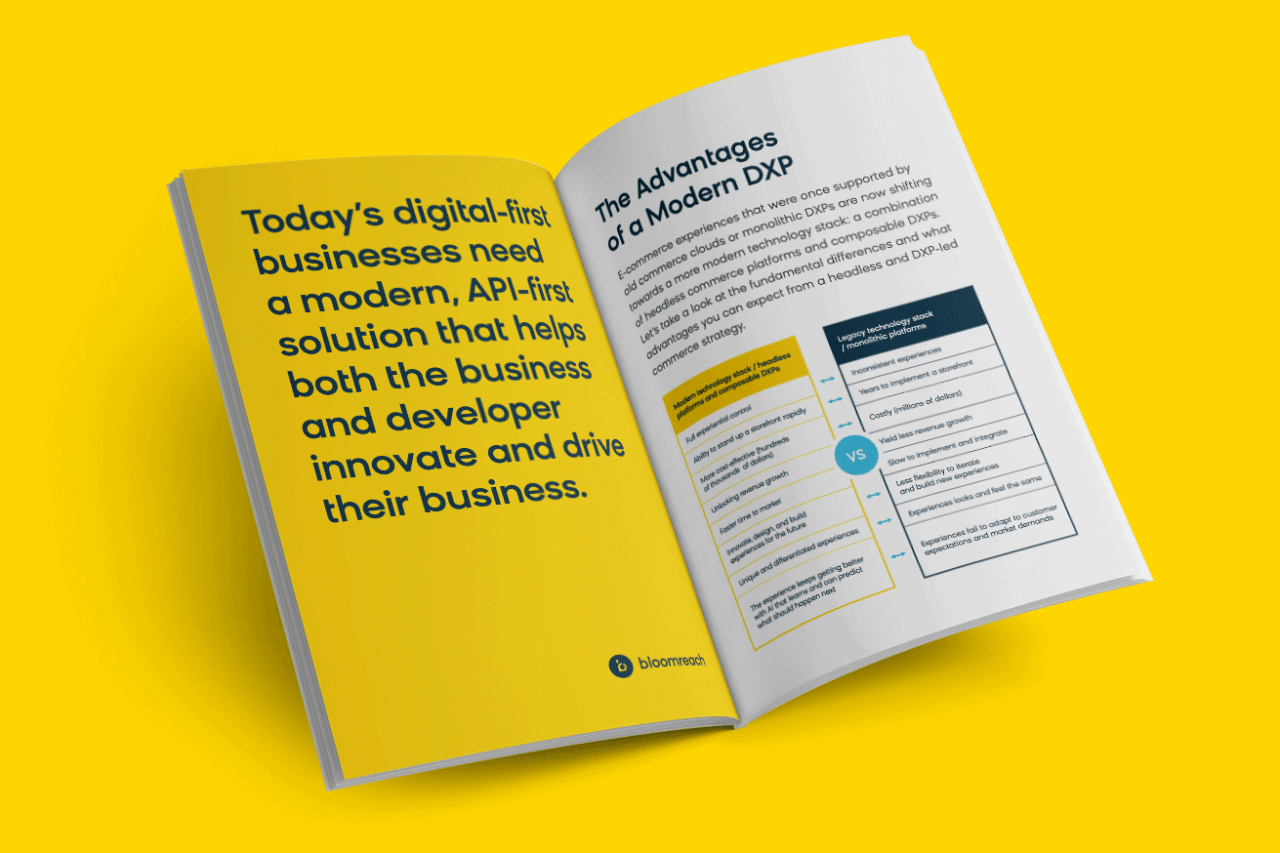
The convergence of technology and evolving customer expectations is rapidly reshaping the digital experience landscape. Understanding these future trends is crucial for businesses aiming to deliver truly exceptional customer experiences. The coming years will see a dramatic shift in how businesses interact with their customers, driven by advancements in artificial intelligence, personalized experiences, and a relentless focus on seamless omnichannel integration.
The future of DXP integration will be defined by a sophisticated interplay of emerging technologies and evolving customer behaviors. This means a move beyond simply connecting disparate systems to a more holistic approach focused on creating personalized, intelligent, and proactive customer journeys.
Emerging Technologies Shaping DXP Integration
The technological advancements driving the future of DXP are numerous and impactful. These technologies will not only enhance the capabilities of existing DXPs but also create entirely new possibilities for customer interaction.
Streamlining the path to a successful customer experience often hinges on seamless DXP integration. A key element in achieving this is efficient application development, and that’s where understanding the power of domino app dev, the low-code and pro-code future , comes into play. By leveraging these modern approaches, you can build and deploy solutions faster, ultimately leading to a more responsive and engaging customer journey.
This speed and agility are crucial for keeping up with evolving customer expectations and maintaining a competitive edge in today’s market.
Key among these are advancements in AI, the Metaverse, Web3 technologies, and the continued evolution of cloud computing. AI-powered personalization engines will enable hyper-targeted content delivery, while the Metaverse opens up exciting new avenues for immersive brand experiences. The decentralized nature of Web3 offers opportunities for greater customer control and data ownership, fostering trust and transparency. Meanwhile, the ever-increasing sophistication of cloud-based solutions provides the scalability and flexibility needed to manage the complexity of modern DXPs.
Evolving Customer Expectations Regarding Digital Experiences
Customer expectations are rising exponentially. Today’s customers demand seamless, personalized, and proactive experiences across all touchpoints. They expect brands to anticipate their needs and provide effortless access to information and support. This shift requires a fundamental change in how businesses approach customer interaction, moving away from a transactional model towards a relationship-focused approach.
For example, customers now expect consistent brand messaging and personalized offers across all channels, from social media to email to in-app notifications. They also expect immediate responses to their inquiries and easy access to self-service tools. Failure to meet these expectations can lead to customer frustration and churn.
Leveraging AI and Machine Learning to Enhance CX Through DXP
AI and machine learning are no longer futuristic concepts; they are powerful tools transforming the customer experience. Within the context of DXP, these technologies can be leveraged to personalize content, predict customer behavior, automate tasks, and provide proactive support.
For instance, AI-powered chatbots can provide instant support, answer frequently asked questions, and even resolve simple issues without human intervention. Machine learning algorithms can analyze customer data to identify patterns and predict future behavior, allowing businesses to personalize offers and proactively address potential problems. This predictive capability leads to improved customer satisfaction and increased efficiency.
Vision for the Ideal Customer Experience Enabled by Future DXP Capabilities
The ideal customer experience of the future will be seamless, intuitive, and hyper-personalized. It will be powered by a sophisticated DXP that anticipates customer needs and proactively delivers relevant information and support. Customers will interact with brands in a natural and effortless way, regardless of the channel.
Imagine a world where a customer’s journey across different touchpoints feels like a single, cohesive experience. Where personalized recommendations are delivered at the precise moment they are needed, and where support is readily available through various channels, all tailored to the individual customer’s preferences. This vision is not science fiction; it is the inevitable future of customer experience, driven by the ongoing evolution of DXP and the power of AI.
Final Review: The Path To A Successful Customer Experience Making Dxp Integration Easier
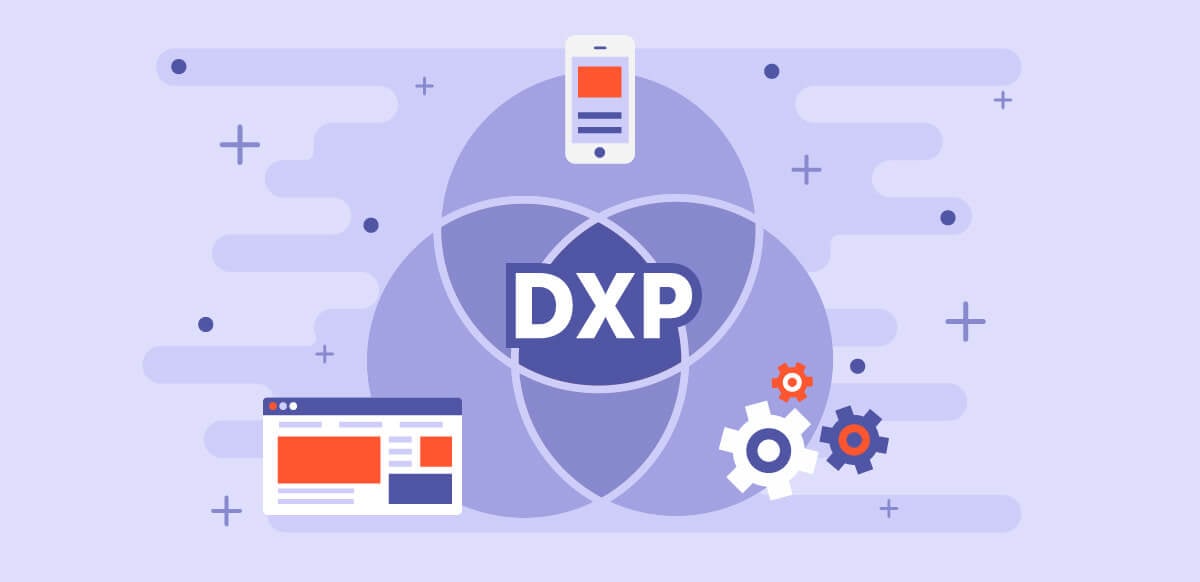
Ultimately, the path to a successful customer experience hinges on a well-integrated DXP that empowers businesses to understand, personalize, and delight their customers. By overcoming integration hurdles, embracing best practices, and staying ahead of emerging trends, organizations can build lasting customer relationships and achieve true CX excellence. Remember, it’s an ongoing journey of continuous improvement and adaptation, but the rewards of a loyal, satisfied customer base are well worth the effort.
So, embark on this journey with confidence, armed with the knowledge and strategies Artikeld here.
Query Resolution
What are the biggest risks associated with DXP integration?
The biggest risks include data migration issues, security vulnerabilities, integration complexities with existing systems, and lack of stakeholder buy-in.
How long does DXP integration typically take?
The timeline varies greatly depending on the complexity of the project, the size of the organization, and the chosen integration methodology. It can range from several months to over a year.
What’s the return on investment (ROI) of a DXP?
The ROI is highly dependent on factors like improved customer satisfaction, increased conversion rates, reduced operational costs, and enhanced efficiency. Measuring ROI requires careful tracking of key metrics before and after implementation.
Can a small business benefit from a DXP?
Yes, even small businesses can benefit from a DXP, although they may opt for a simpler, more affordable solution tailored to their specific needs and scale.
